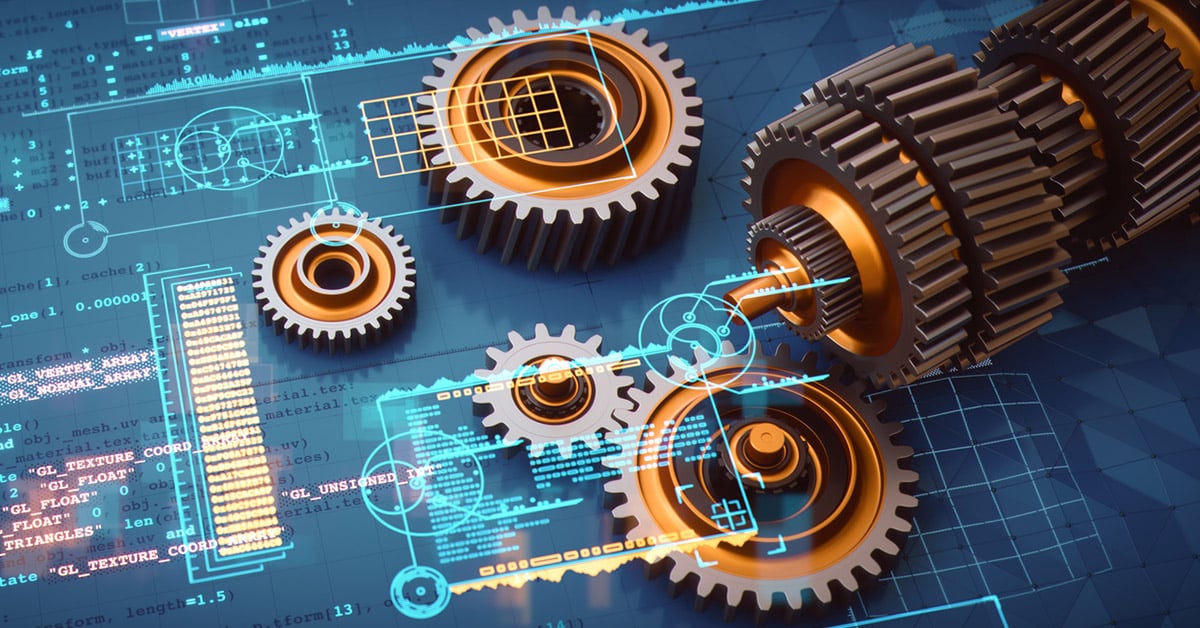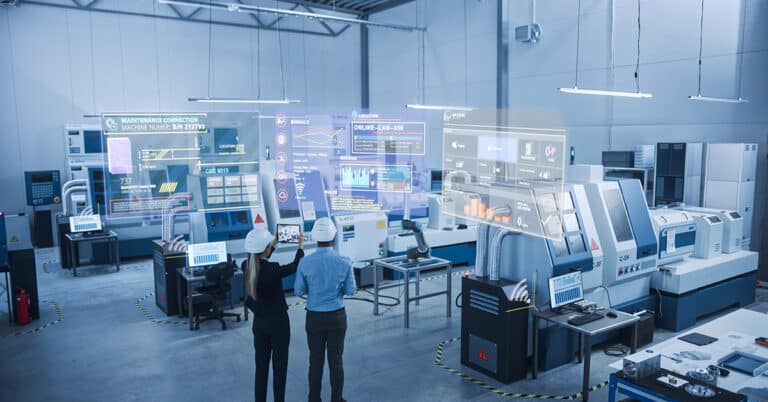Additive manufacturing is one of the key areas of manufacturing in which artificial intelligence is making an impact. The two technologies — AI and additive manufacturing — have risen sharply in adoption over the past several years, and we are now seeing the benefits that they can yield by working together. AI in additive manufacturing is providing quality improvements, boosts to innovation and productivity, and an overall positive impact on profit margins and the bottom line.
Ways AI is used in additive manufacturing
With the introduction of artificial intelligence, additive manufacturing is seeing unprecedented gains in design innovation, quality control, production efficiency and more — and is also making ever-greater contributions to operations throughout the facility, including maintenance. We will explore those benefits in greater depth here.
- Prefabrication design: AI is contributing to the design phase of additive manufacturing in numerous ways. Early in the process, AI can be used to determine whether additive manufacturing is the most efficient and effective choice for manufacturing a type of design. Beyond this stage, AI is also used for generative design, spurring innovation and creating a faster and more efficient design process, generating a design on the basis of a set of parameters or requirements. AI in 3D printing design is also useful for topology optimization, using machine learning to render a design for the most efficient production possible.
- Quality assurance & defect detection: In additive manufacturing, artificial intelligence can be used with vision systems to monitor the production process in real time and detect any potential defects as they occur, even those that would not normally be visible to the naked eye. AI, in these scenarios, provides more accurate quality monitoring, reducing the amount of potentially defective product output. AI can also be effectively used in general quality assurance processes after production occurs, quickly and effectively detecting potential problems as they come off the line.
- Control material usage: In addition to the above application, AI can also help enable a more proactive approach if potential defects are detected in the additive manufacturing process, helping to control material usage in real-time and vastly reduce discarded material. 3D printing AI can accomplish this by detecting potential defects and then helping operators or technicians to remedy the issue or — with the benefit of machine learning — allowing the manufacturing process to make those decisions on its own. By engaging in this type of real-time control, AI systems can reduce the number of defective pieces that would otherwise be discarded.
- Predictive maintenance: Predictive maintenance — the practice of using industrial technologies to detect the beginnings of potentially problematic production issues — is changing the face of manufacturing facilities, enabling an entirely new mindset for maintenance, productivity, inventory management and troubleshooting processes. Additive manufacturing and AI are able to support these advances, with on-demand production of 3D printed industrial parts creating increased maintenance and inventory efficiency through just-in-time delivery. AI can support these efforts by initiating production when potential issues are detected and by monitoring equipment lifecycles and predicting maintenance needs based on historical data.
Benefits of AI in additive manufacturing
Based on the above applications — and more — AI in additive manufacturing offers a broad range of tangible benefits for manufacturers. These benefits include:
- Improved prefabrication quality assurance: Proactivity in manufacturing is often one of the most direct routes to efficiency improvements and cost savings, and AI can yield major benefits in this area. By enabling prefabrication quality assurance — vetting the design to ensure that the additive manufacturing process is the right choice, and that the design can be effectively produced — AI can vastly reduce wasted time, effort and materials in testing and iterating on designs before achieving the right one. In essence, AI can replicate the QA process of a “finished” part before production ever begins, creating major time and cost advantages.
- Reduced process complexity: Applying AI during the design and ideation stage can be helpful for streamlining designs and reducing process complexity. This process creates a number of benefits: simplifying production, reducing manufacturing costs, streamlining material usage, easing the QA burden and speeding up the overall process and time to market.
- Efficient, high-quality production: AI in additive manufacturing provides across-the-board benefits that provide measurable cost savings, actionable operational insights and improvements and an overall benefit to the bottom line. When applied to additive manufacturing — as with other processes throughout the organization — AI can help to identify potential problems; streamline design, production, and post-production processes; assist workers in decision-making and speed up nearly every process throughout the facility. The numerous advantages of additive manufacturing are further bolstered by the introduction of artificial intelligence.
At ATS, we draw on decades of experience and expertise in industrial maintenance and parts services along with industrial technologies like 3D printing of parts to meet your needs. To learn more about our services, contact us today.


